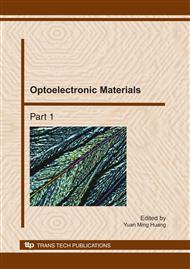p.1229
p.1234
p.1238
p.1242
p.1247
p.1252
p.1256
p.1260
p.1264
Effect of Different Washing Treatments on the Formation of Titanate Nanotubes
Abstract:
Titanate nanotubes were successfully synthesized by means of an alkaline hydrothermal method and further appropriate post-treatments. The effect of different washing treatments on the formation of titanate nanotubes were systematically studied in this paper. It was found that the washing treatments play an important role in the formation of nanotubes. Treating with 0.1M NaCl aqueous solution mainly resulted in titanate nanosheets while treating with deionized water or 0.1M HCl aqueous solution (1 time, PH>7) can obtain highly crystallized titanate nanotubes. Furthermore, if the PH values of solutions after acid washing processes were below 7, trace of nanotubes can be found but almost all of them were damaged. On the basis of all the present experimental results, we can conclude that titanate nanotubes can be prepared as long as the driving force induced by the imbalance of sodium ion (Na+) concentration on two different sides of nanosheets was appropriate, and meanwhile they were instable in acidic solutions.
Info:
Periodical:
Pages:
1247-1251
Citation:
Online since:
November 2010
Authors:
Price:
Сopyright:
© 2011 Trans Tech Publications Ltd. All Rights Reserved
Share:
Citation:


